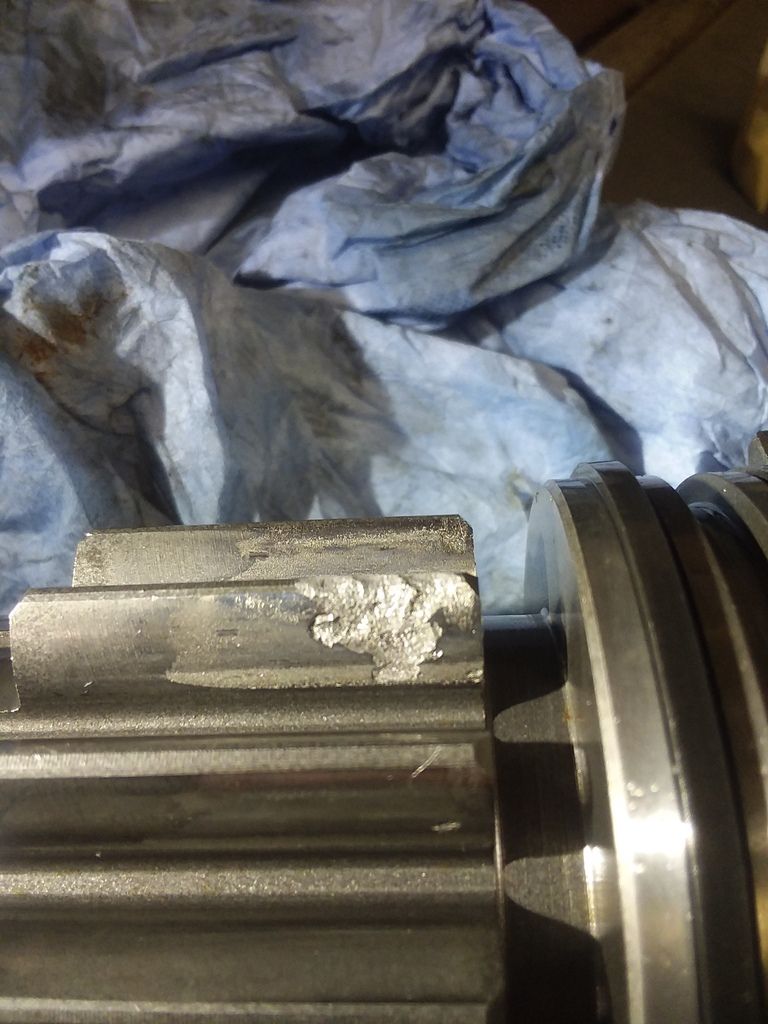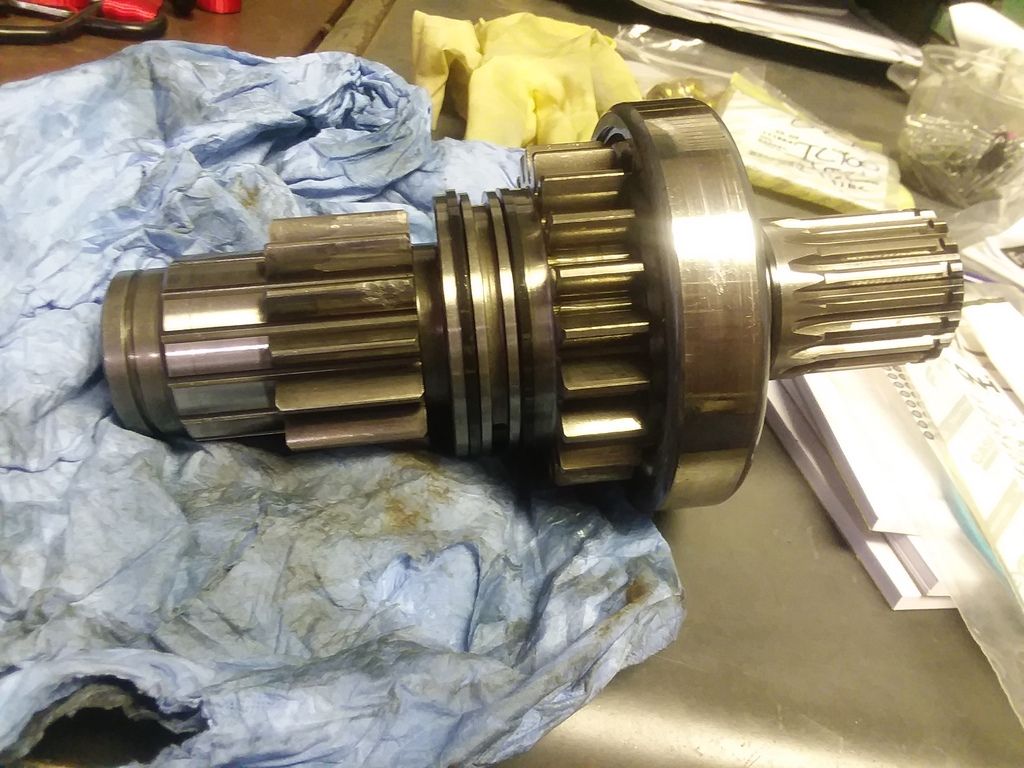The tooth damage shown is caused by a piece of hard steel jammming in the teeth....
I do not think so.
When you get a piece of steel jammed between teeth, it generally causes a tooth to crack all the way across and a portion blows off, leaving an edge that looks like a glass break.
On this, it appears that a section maybe .050" deep separated from the base material and came off. That's consistent with a failure of the case.
Generally that's caused by overloading. The load on the tooth surface exceeds the strength of the base material, you get subsurface cracks, the cracks eventually join up and a big chunk of case falls off.
The bad wear pattern on the teeth also tends toward this conclusion. If the tooth is designed for 50,000 psi but only half the tooth is taking the load, then the area that's engaged sees 100,000 psi. Then the subsurface cracking starts, ending in case spalling.
Which is what that tooth looks like to me ... but it's just a guess based on a photo ...
Whether welding is a good fix or not, that's anybody's guess. Nothing is going to amke that thing like new, but is full tooth contact over a softer tooth better, or just leave it as-is and lower the load better ?
If he runs it the way it is with the normal load, it's going to come apart very fast. If that one place blew the case off, then there's a bunch more all the way around the gear ready to go. Maybe welding would soften the teeth and give a wider contact area, so that might work better for a short-term fix. I've seen softer teeth just smeared all over, that might be better than breaking. Or maybe not. Maybe just leaving it alone and running it lightly would be best.
It's a disaster looking for a place to happen no matter what









